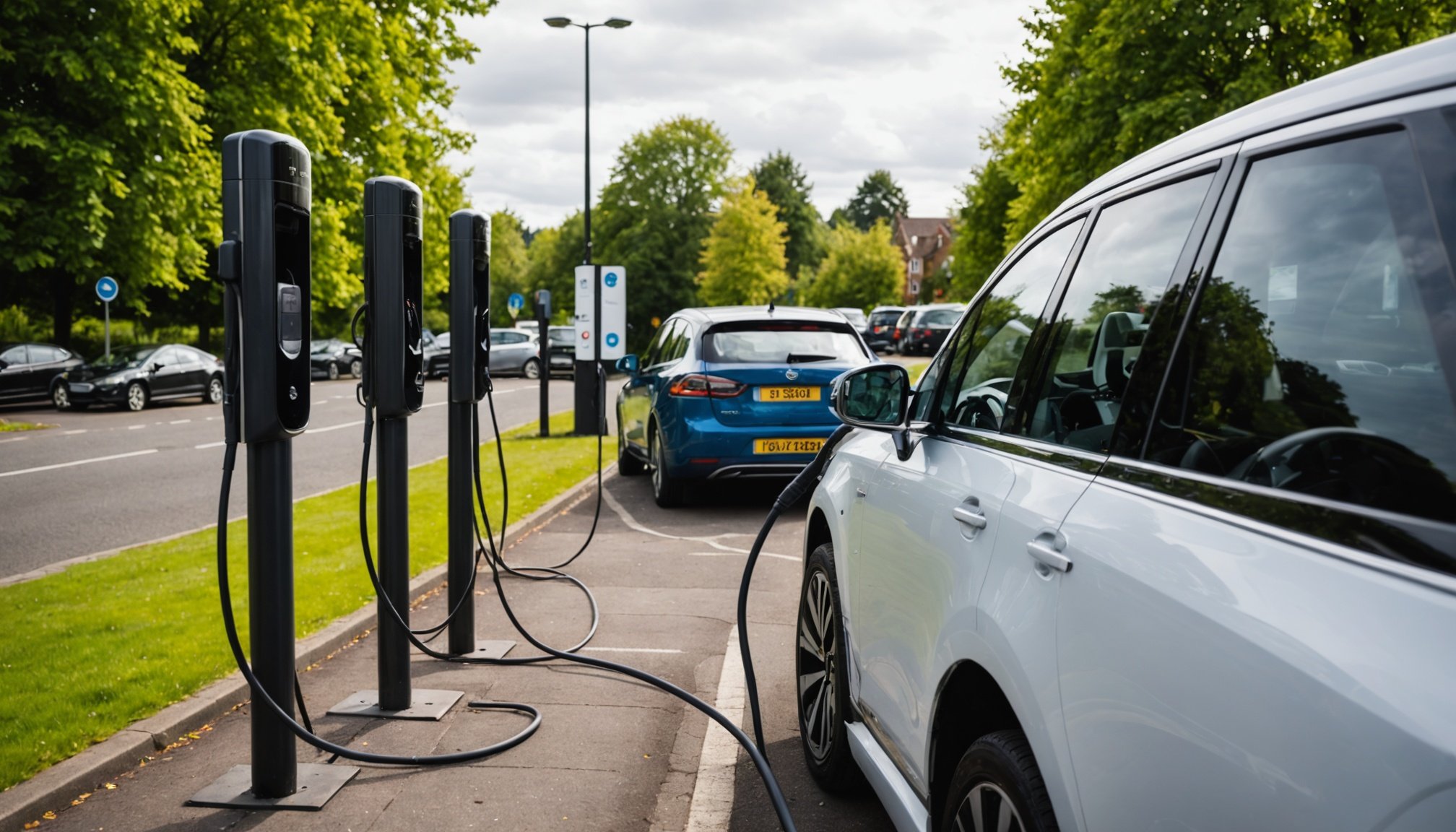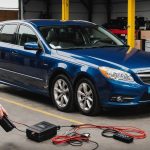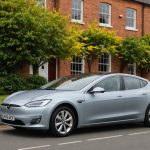Maximizing Your Electric Vehicle Experience: Navigating the UK’s Expanding EV Charging Station Network
As the UK continues to embrace the electric vehicle (EV) revolution, the infrastructure to support these eco-friendly cars is expanding rapidly. For those considering or already driving an electric vehicle, understanding and navigating this growing network of charging stations is crucial. Here’s a comprehensive guide to help you make the most of your electric vehicle experience in the UK.
Understanding the Charging Infrastructure
The UK’s charging infrastructure is a complex but rapidly evolving system designed to support the increasing number of electric vehicles on the roads. Here are some key points to understand:
In the same genre : What are the environmental impacts of different types of fuel used in UK vehicles?
Public Charging Stations
Public charging stations are becoming increasingly common, with major players like TotalEnergies and Fastned investing heavily in their networks. For instance, Fastned is set to install its first ultra-rapid charging points in London by 2026, with plans to expand to at least 20 more locations[1].
| Provider | Number of Stations | Rapid Charging Capability |
|
|--------------------|
|
| TotalEnergies | Over 1,000 | Yes, up to 150 kW |
| Fastned | Expanding rapidly | Yes, up to 350 kW |
| Pod Point | Over 3,000 | Yes, up to 50 kW |
| Ecotricity | Over 300 | Yes, up to 50 kW |
Home Charging Solutions
Home charging is often the most convenient option for EV owners. Many providers offer home charging solutions that can be installed in your garage or driveway.
Topic to read : Exploring the Impact of UK Seasonal Variations on Electric Vehicle Battery Efficiency
| Provider | Home Charging Options | Cost |
|
|------------------------|
|
| Pod Point | 3kW, 7kW, 22kW | £449 - £1,049 |
| BP Pulse | 3kW, 7kW | £549 - £949 |
| EO Charging | 3kW, 7kW | £395 - £795 |
Tips for Using Public Charging Stations
Using public charging stations can be straightforward, but here are some tips to make your experience smoother:
Finding Charging Stations
- Use Online Maps and Apps: Platforms like Zap-Map, Waze, and the UK Government’s Go Ultra Low website provide comprehensive maps of charging stations across the UK.
- Check Station Availability: Many apps allow you to check the real-time availability of charge points, helping you avoid queues.
- Filter by Speed: If you need a quick top-up, filter by rapid or fast charging stations.
Charging Etiquette
- Be Mindful of Time Limits: Some public charging stations have time limits to ensure fair access for all users.
- Keep the Area Clean: Dispose of any trash and keep the charging area tidy.
- Respect Other Users: Avoid blocking other charging points or parking spaces.
Rapid and Fast Charging: What You Need to Know
Rapid and fast charging are essential for long-distance travel and quick top-ups.
Rapid Charging
- Speed: Up to 350 kW, capable of charging your battery to 80% in under 30 minutes.
- Providers: Fastned, TotalEnergies, and Ionity offer rapid charging services.
- Cost: Generally more expensive than slow or fast charging, but prices vary by provider.
Fast Charging
- Speed: Typically up to 50 kW, charging your battery to 80% in about an hour.
- Providers: Pod Point, Ecotricity, and BP Pulse offer fast charging options.
- Cost: More affordable than rapid charging but still convenient for shorter stops.
Practical Insights for Electric Vehicle Drivers
Here are some practical insights to enhance your EV driving experience:
Battery Health
- Avoid Extreme Temperatures: Extreme heat or cold can affect your battery’s performance and longevity.
- Keep Your Battery Level Between 20% and 80%: Avoiding full discharges and keeping your battery level within this range can help extend its life.
Charging at Home
- Schedule Your Charging: Use smart chargers to schedule your charging during off-peak hours when electricity rates are lower.
- Use Renewable Energy: If possible, invest in solar panels or renewable energy tariffs to charge your car sustainably.
Public Charging Networks
- Membership and Pay-As-You-Go Options: Many providers offer membership plans or pay-as-you-go options. Choose the one that best fits your driving habits.
- Network Coverage: Check the coverage of different networks to ensure you have access to charging points on your regular routes.
Quotes from Industry Experts
- “The UK’s charging infrastructure is evolving rapidly, and we’re committed to making sure our network meets the growing demand for electric vehicles.” – A spokesperson from TotalEnergies[3].
- “Fastned is dedicated to providing ultra-rapid charging solutions that make long-distance travel in electric vehicles as convenient as possible.” – A representative from Fastned[1].
Detailed List of Charging Solutions
Here is a detailed list of charging solutions available in the UK:
-
Pod Point:
-
Offers 3kW, 7kW, and 22kW home chargers.
-
Has over 3,000 public charging points across the UK.
-
Provides a pay-as-you-go option and membership plans.
-
BP Pulse:
-
Offers 3kW and 7kW home chargers.
-
Has a network of over 8,000 public charging points.
-
Includes a mobile app for finding and using charge points.
-
EO Charging:
-
Offers 3kW and 7kW home chargers.
-
Partners with various businesses to provide workplace charging solutions.
-
Known for its user-friendly interface and competitive pricing.
Table Comparing Major Charging Networks
Here is a comparative table of some major charging networks in the UK:
| Provider | Number of Stations | Rapid Charging Capability | Membership Options | Cost per kWh |
|---|---|---|---|---|
| TotalEnergies | Over 1,000 | Yes, up to 150 kW | Yes | 25p – 30p |
| Fastned | Expanding rapidly | Yes, up to 350 kW | Yes | 30p – 35p |
| Pod Point | Over 3,000 | Yes, up to 50 kW | Yes | 23p – 28p |
| BP Pulse | Over 8,000 | Yes, up to 50 kW | Yes | 25p – 30p |
| Ecotricity | Over 300 | Yes, up to 50 kW | Yes | 30p – 35p |
Navigating the UK’s expanding EV charging station network can seem daunting, but with the right information and strategies, it can be a seamless part of your electric vehicle experience. Whether you’re relying on public charging stations, home charging solutions, or a combination of both, understanding the options available and how to use them efficiently will make your EV ownership more enjoyable and practical.
By following the tips and insights provided here, you’ll be well-equipped to maximize your electric vehicle experience and contribute to a more sustainable transportation future. As the network continues to grow and improve, the future for electric vehicle drivers in the UK looks brighter than ever.
Understanding Different Charging Options
Owning an electric vehicle (EV) requires understanding various charging types available, each offering distinct benefits. Let’s explore Level 1, Level 2, and DC fast charging to determine what suits your needs best.
Level 1 chargers are the most basic and accessible, as they plug into a standard household outlet. While they are convenient, their charging speeds are slow—typically adding around 4-5 miles of range per hour, which might be insufficient for long commutes unless overnight charging becomes routine.
Level 2 chargers offer faster charging solutions and are often installed at home. They require a dedicated 240-volt outlet, much like what is used for major appliances. This home charging solution significantly reduces charging time, adding about 20-30 miles of range per hour. Although installation requires an electrician, the investment may lead to long-term cost savings and convenience.
For those who need quick energy top-ups, DC fast charging is ideal, predominantly available at public charging stations. These deliver up to 80% charge in as little as 30 minutes, though the cost per session is typically higher compared to home setups.
Evaluating your driving habits and home charging potential will guide you in selecting the appropriate charging infrastructure, balancing cost, convenience, and performance.
Planning Your EV Journey
Embarking on a journey with an electric vehicle (EV) requires meticulous route planning to ensure a seamless drive. To optimise your journey, identify charging itineraries with convenient stops. This means selecting routes where charging stations are readily accessible, ideally every few hundred miles.
It’s also wise to have backup charging options. Primary chargers may sometimes be unavailable due to maintenance or usage, so a secondary plan is essential. Think of it as having a spare tire; it’s better to be prepared.
Utilizing trip planning tools designed specifically for EVs can greatly enhance the efficiency of your travel. Apps like PlugShare or A Better Routeplanner allow you to pinpoint charging stations, calculate energy needs, and even anticipate road conditions. Such tools offer a more detailed overview, helping to mitigate the unexpected twists of a long-distance trek.
Combining these strategies with proactive travel tips for EV drivers ensures that you’re not caught off guard by unforeseen obstacles. Breaks can be strategically aligned with charging schedules, turning recharging downtime into an opportunity to relax or explore nearby attractions. A thoughtful approach to planning not only conserves battery life but also enriches your travel experience.
Maximizing Charging Efficiency
To maximize charging efficiency and minimize costs, it’s crucial to consider optimal charging times and energy management strategies. One effective approach is to charge during off-peak hours. Off-peak times are periods when the demand for electricity is lower, typically overnight. Charging at these times can lead to significant cost savings due to reduced rates offered by many energy providers.
While on the road, managing energy consumption is equally important. Employing a few practical measures can extend battery life and efficiency. Avoid rapid accelerations and unnecessary idling, which consume more energy. Proper trip planning also plays a vital role. Mapping out stations along your route ensures you always have access to a charging point, optimizing your energy use and reducing potential anxiety over battery levels.
Understanding local electricity tariffs is another key element. Some regions offer variable pricing that incentivizes charging at certain times. Exploring these options allows you to take advantage of the best rates. Additionally, utilising a smart charging setup can automatically schedule charging for optimal periods. These practices ensure you’re not only saving money but also contributing to a more sustainable energy consumption pattern.
Emerging Technologies and Trends
The future of EV charging is set to be transformed by innovative technologies and smart solutions. As the automotive industry shifts towards electrification, upcoming technologies aim to enhance the EV charging experience significantly.
Smart charging solutions are at the forefront of this transformation. These solutions integrate communication between EVs and charging stations. They allow users to optimise charging based on electricity demand, reducing costs and emissions. By efficiently balancing demand and supply, smart charging is poised to play a crucial role in the growth of the UK’s EV charging network.
The integration of smart grids and renewable energy sources into charging infrastructures represents another pivotal development. Smart grids facilitate the efficient distribution of energy, adapting to the varying demands of EVs. This ensures that clean energy, such as solar or wind, can directly power EVs, promoting sustainability.
Looking to the future, the UK’s EV charging network is expected to expand rapidly. Government initiatives and investments in green technologies support this expansion. Predictions indicate a vast increase in charge points, ensuring a seamless transition to an electric future for all drivers. This growth reflects the commitment to making EV charging more accessible, efficient, and environmentally friendly.











